-
Posts
8,114 -
Joined
-
Last visited
Content Type
Profiles
Forums
Gallery
Events
Posts posted by allanyed
-
-
Hi Hamilton
When you say a fair run of the planks, what do you mean? I took it that you were talking about the width of the wales, not the thickness. The thickness did taper in order to seat into the rabbet as Druxey points out, but the width is another matter. The other planks taper in width as they approached the bow, so it is a fair question to ask if the wales also taper in width.
Allan
-
Monello,
Welcome to the club of redo, we all have a scrap box of mistakes.
I don't know about others but from my experience, oak was not a friendly wood in terms of cutting, carving, or chiseling and the large grain is not attractive in most model scales. I know you have that lovely stack of dried timber, but this is something to consider and I for one would like to hear if anyone else has had bad experiences in using oak.
Allan
-
Danny
Wouldn't it have been quicker to order a piece of tubing and soldering than sanding and filling
 Disk sander or not, that is a LOT of material to remove.
Disk sander or not, that is a LOT of material to remove.I must say they do look very very good.
Allan
-
Did you consider not gluing them? Drill very small holes and pin them to the hull with tiny brass nails or brad. Paint over the "bolt" heads to match the flags as close as you can. OR drill and pin with shoirt pieces of very small diameter brass rod then put a dot of epoxy.
Allan
-
Naci
Three sources are The Art of Ship Modeling, TFFM Vol. 2 and Euryalus 1803, Vol 2. Each is a bit different than the other, but all three work.
My preference of course is the last, because it uses a single piece mold, not two part split mold, thus not parting line down the middle of the barrel.
I am sure there are other viable sources that other members will hopefully post for you.
Allan
-
This topic has been moved to the furniture, guns, etc forum.
Allan
-
Nacioffi,
Further to Druxey's comment, if you do not have a lathe, purchase one of each size barrel, that you require and then cast your own in resin or pewter. It is not terribly difficult, it will save a lot of money, and it really is gratifying. Careful to get good quality, scale, proper era barrels in the right caliber.
Allan
-
I thought to look at some contemporary models for an answer, but I am more confused. They all show natural ratlines, but the standing rigging is natural except on the Prince Frederick.
The top photo is a 60 of 1705, the second is a 36 of 1780, the third is the Portland 1693 and the last is the Prince Frederick 1714
Not also that the lanyards for the deadeyes are natural in each case as well.
Allan
-
Mike,
When at all possible, work from the inside out and then the spars and running rigging. If you do not already have any, consider getting a rigging book or two. Volume 4 of TFFM by David Antscherl, James Lees Masting and Rigging are VERY good. The former explains how-to rig a sixth rate, but much of the information will serve you well for any vessel. The latter covers a range of vessel sizes from 1625 to 1860 in such a way that you can calculate mast, spar and rigging sizes. It is not so much a "how to" book but gives a wealth of information including where each piece of rigging starts and ends. It is laid out in pretty much the order you would do the rigging. There are a few others that many of the folks here like and can recommend. These two happen to be my personal favorites.
Allan
- ranikola and Mike Dowling
-
 2
2
-
Mark,
It may be easiest if you spile those last few. There is a lot information in the tutorials at MSW on spiling. It is easy to do and saves a lot of wood as you will get the shape using some card stock first versus your planking materials. Once you make the card stock plan you can trace it onto the wood. Or you can just get the card stock and trial and error until you get the exact shape, then trace this onto the wood.
Allan
-
Steve,
I went to the video and I must say, it was nicely done. For anyone that has not been using clove hitches, this video should convince them it is not only the easy, it duplicates real world practice.
Allan
-
Rob,
As the saying goes, necessity is the mother of invention. There is so much information out there that is simply too difficult or expensive for most of us to access so when this chance came up, I knew what I wanted to do and Bob Friedman was instrumental in making it happen, in spite of a lot of agida that came with the project.
Allan
-
-
-
Rob,
I am very happy that you like the book, I appreciate you taking time to post that. As to Q&A, I am always in the learning mode as well.
I must admit I have no sure answer for you. The 1719 Establishment had a line that this dimension was the same bigness as the keel amidships. I merely copied the same dimensions from the appropriate line of dimensions. Unfortunately, as I was transcribing, I did not look at what many items actually are, but now I want to know as well. I have attached what MAY be the answer. I hope some of the more learned members kick in their two cents be my answer right or wrong, more likely the latter.
Allan
-
Shihawk,
If the guns were run out, they were there to be fired. If they were there to be fired, I bet no one was too concerned about making nice cheese rolls on the deck or worried about rot or much else. They just wanted to be sure they could cleanly move the lines so they could haul the gun into place with the barrel outside the hull before firing. Perhaps a neat but not perfect coil was used if only to minimize tripping hazards or kinked lines that would impair use of the lines when hauling or during recoil.
If the ship was not engaged in battle or practice firing, the guns were secured inboard with the barrel up and tight against the inside of the hull, and the side running tackle ends frapped, not hitched or coiled on the deck. The tackle used to haul the piece inboard was removed when the piece was secured like this. Is that the only way it was done? I have no clue, but these are the methods I have seen decribed most often
Allan
-
- BANYAN and thibaultron
-
 2
2
-
-
Jay,
The third nail (pin) is so simple and effective. Thanks for sharing.
Allan
-
Cabra
Very nice working hinges on the doors.
What is the second photo of the last group about? Sorry to ask if you described it previously, but I did not see it.
Thanks,
Allan
-
Very nice write up Nigel. The explanation of slicing away the planks from the tissue sheet while the glue is semi cured should be heeded. Too soon will see some tearing but too late is as described previously, possible but difficult.
For those in the states, I bought a pack of black tissue at Michael's some years ago and I think they sill carry it.
Allan
-
Andy
You may find it beneficial to join the Wasa group, of which Fred Hocker is an active member and Clayton Johnson is the administrator. The deck planking thickness is different on each deck. Not only does the length of each plank vary, the widths vary as well. There are plans of the deck planking that may help.
Fred's book on the Wasa may be of interest as well.
http://warshipvasa.freeforums.net
Allan
-
Mike,
In my opinion, the time to add sails is never. Unless they are furled, and/or your model is at least 1:48 or larger they are very difficult to make to scale and rig so they hang naturally. I have done sails on a number of schooner models that are 1/4" scale only because the client always requires it but I use at least 800 thread count linen or better, 1200 TC if I can find it at a discount price. I will probably try silk span on the next one.
If you feel you must include sails, the thinnest you can probably readily find is silkspan. It comes in three grades, starting from the lightest, 00, 000, and SGM. I believe all the new stuff is polyspan. I also suggest you get a copy of David Antscherl's TFFM Volume 4 to get a great source of information on rigging. If you want to go with silkspan Google K&S White Aero Silk Covering for information and sources.
Good luck
Allan
-
Frank,
Never too old to learn I say. I had never heard of the ballentine before, but once I saw it, I thought, ah, yes, just like the beer symbol!
Allan



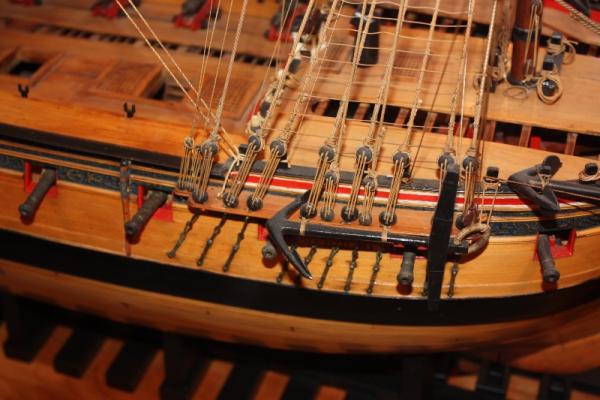
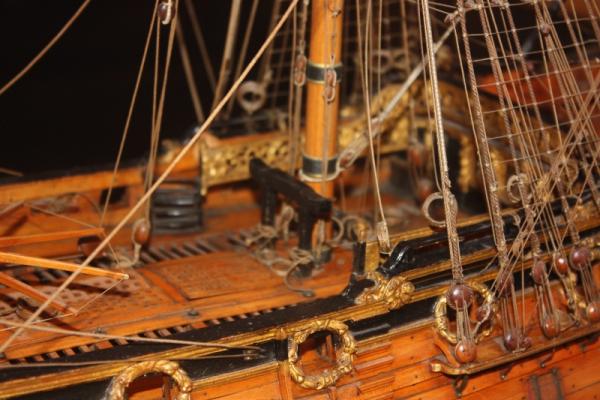
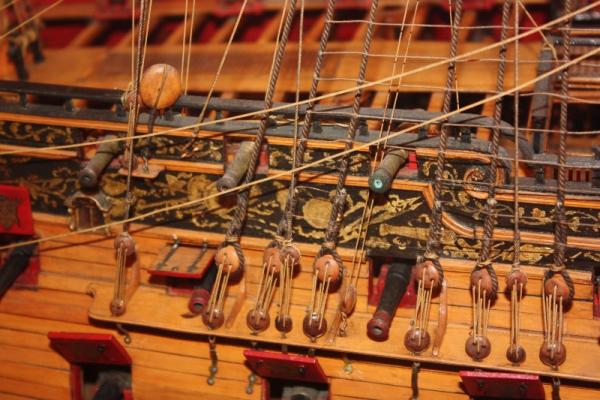
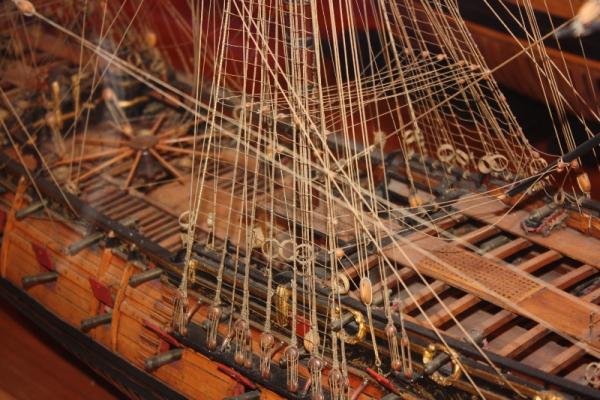
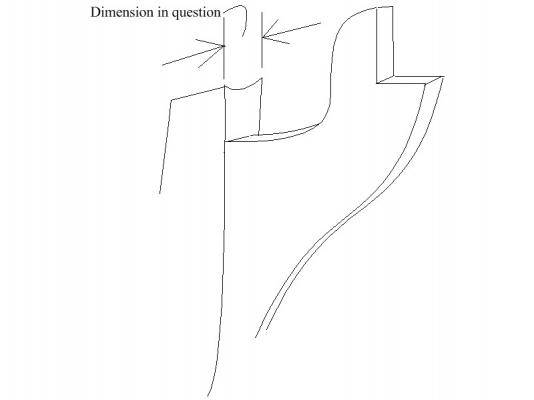
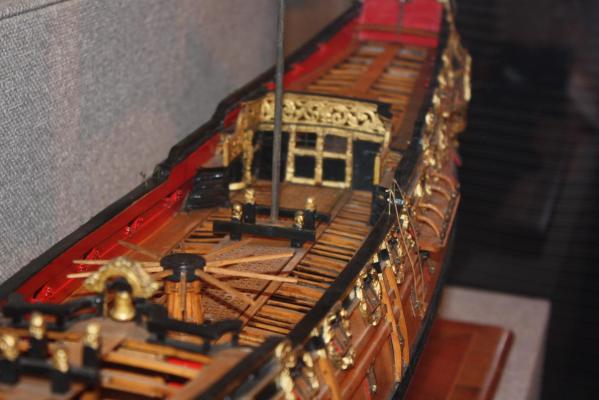
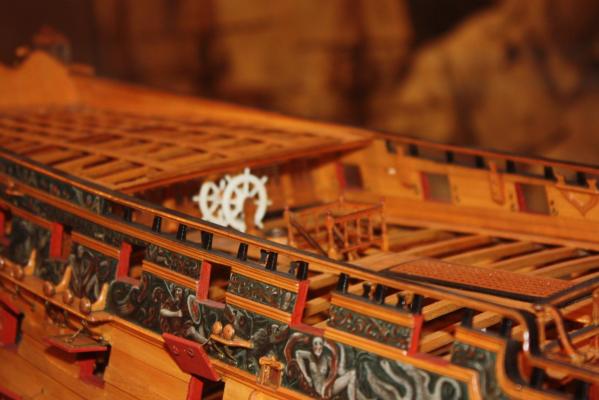
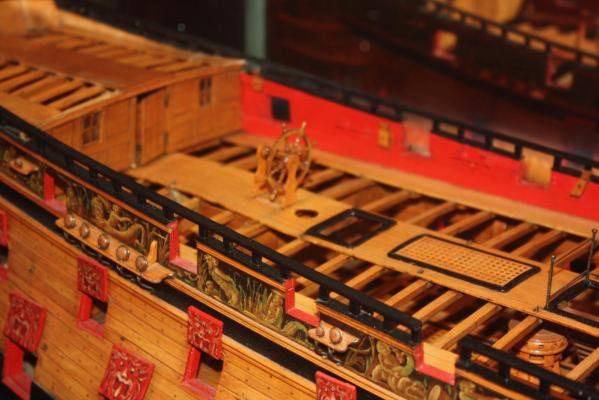
Making sails for HMS Victory
in Masting, rigging and sails
Posted
Frankie,
I think the consensus is sails on a model at scales such as 1:98 look terrible. They are near impossible to make to scale regarding thickness and sewing pattern, they make rigging more difficult, and they cover from view a lot of the work that goes into the model.
Allan